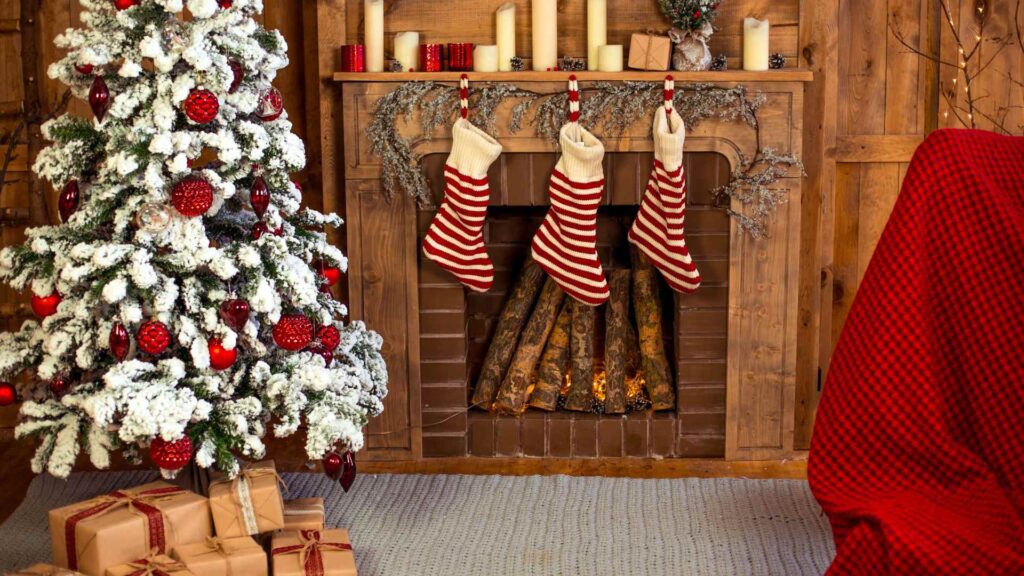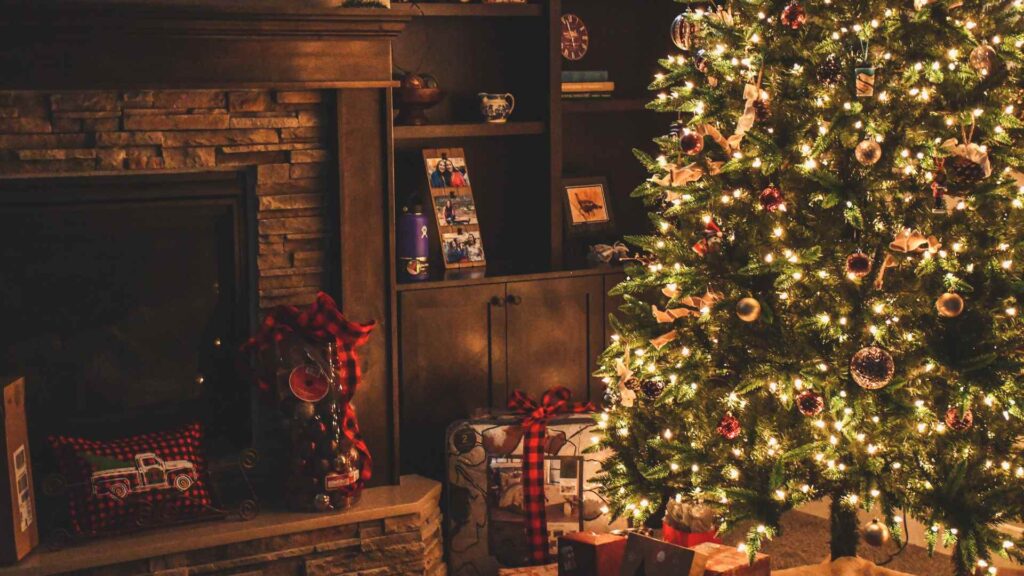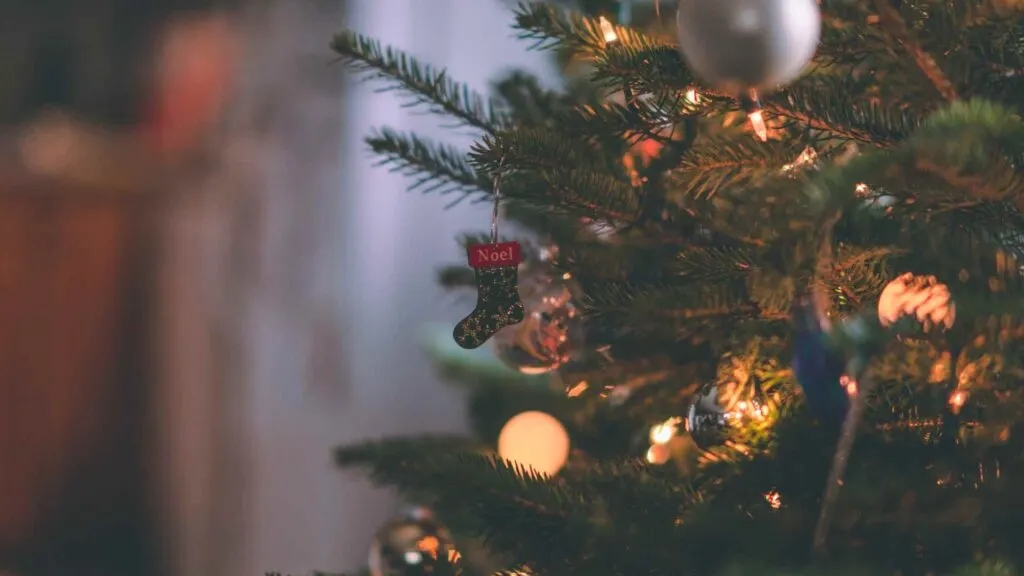Christmas is a season of joy, cheer, and delightful traditions, celebrated in unique ways around the world.
Dive into this ultimate guide of 145 fun facts to learn surprising and heartwarming tidbits about Christmas traditions, history, and more. Get ready to impress your friends and family with these festive facts!
The Origins of Christmas Traditions
- Christmas on December 25 was chosen to coincide with the Roman festival Saturnalia, celebrating the winter solstice.
- Saint Nicholas was a real Christian bishop who inspired the modern-day Santa Claus.
- The Christmas Tree tradition began in Germany in the 16th century, with families bringing evergreen trees into their homes.
- The word “Christmas” comes from the Old English phrase “Cristes Maesse,” meaning “Christ’s Mass.”
- Santa’s modern image as a jolly, bearded man in red was popularized by Coca-Cola ads in the 1930s.
- Mistletoe’s significance in Christmas is ancient; it was considered sacred by Druids and symbolized peace.
- Christmas stockings originated from a legend where St. Nicholas filled the stockings of poor children with gold coins.
- Candy canes were invented in Germany in the 17th century to represent shepherds’ crooks.
- Caroling has its roots in ancient England, where “Wassailing” meant singing for cider in exchange.
- The Yule Log tradition originates from Scandinavia, where families burned a log to bring warmth and good fortune.
- Rudolph the Red-Nosed Reindeer was created in 1939 by Robert L. May as a promotional character for Montgomery Ward.
- The first Christmas cards were commissioned in London by Sir Henry Cole in 1843.
- Tinsel was first made of real silver in Germany in the early 1600s.
- The Poinsettia plant is associated with Christmas due to a Mexican legend where a child’s gift to Jesus miraculously turned into a red flower.
- Santa’s sleigh ride idea may be inspired by Norse mythology, where Thor rode a chariot pulled by goats.

Santa Claus Around the World
- In the Netherlands, Santa is known as Sinterklaas and arrives by steamboat with his helpers.
- In Italy, children receive gifts from La Befana, a friendly witch, on Epiphany rather than on Christmas.
- In Russia, Ded Moroz (Grandfather Frost) and his granddaughter, Snegurochka, deliver presents on New Year’s Eve.
- In Spain, the Three Wise Men deliver gifts on January 6, celebrating the Epiphany.
- Japan’s “Santa” doesn’t bring gifts. Instead, families celebrate by eating KFC, a popular tradition since the 1970s.
- Germany’s Christkind, a childlike angel, delivers gifts rather than Santa.
- In Iceland, 13 mischievous “Yule Lads” deliver presents over the 13 nights leading up to Christmas.
- In Brazil, Santa is called Papai Noel and wears silk clothing to keep cool in the heat.
- France’s Père Noël places gifts in children’s shoes left by the fireplace.
- Norway’s “Julenissen” is a gnome-like figure who brings presents.
- In Hungary, children receive gifts from “Baby Jesus” on Christmas Eve.
- In Finland, Santa is thought to live in the North Pole’s counterpart, Korvatunturi, in Lapland.
- Australian Santa Claus wears shorts and flip-flops, celebrating with barbecues on the beach.
- In Greece, St. Basil brings presents, and Christmas is also celebrated with the “Kalikantzari” goblins.
- Mexico’s Santa is often accompanied by a Christmas piñata, filled with sweets and treats.

Christmas Decorations and Symbols
- The Rockefeller Center Christmas tree has been a New York City tradition since 1933.
- Ornaments on Christmas trees started as apples, wafers, and sweets in medieval Germany.
- Holly is used in Christmas decor for its symbolism of the crown of thorns worn by Jesus.
- The largest Christmas tree display is in Rio de Janeiro, with a floating, illuminated tree on the Rodrigo de Freitas Lagoon.
- The star on top of the Christmas tree represents the Star of Bethlehem.
- Snow globes became a Christmas symbol after being patented in Austria in 1900.
- Christmas wreaths are circular to represent eternal life, and green for growth and fertility.
- Red and green colors symbolize Jesus’ blood (red) and eternal life (green).
- Angels are common decorations to commemorate the angels who announced Jesus’ birth.
- Glass ornaments became popular in America after Woolworth began selling them in the 1880s.
- Pinecones in wreaths symbolize fertility and rebirth during the winter season.
- The Christmas pickle is a quirky German tradition in which a pickle ornament is hidden on the tree for someone to find.
- The “Elf on the Shelf” tradition originated from a 2005 children’s book to encourage kids to behave well.
- Fake snow used in decorations is sometimes made of shredded Styrofoam or even potato flakes.
- Bows and ribbons on gifts signify unity, bringing families closer together during the season.
Holiday Food Traditions Worldwide
- Candy canes were first used to keep children quiet during church services in Germany.
- Eggnog traces its origins back to medieval Britain, where monks drank a version of it called “posset.”
- Fruitcake is popular for its long shelf life, often made months ahead and soaked in brandy or rum.
- In Japan, a Christmas meal often means fried chicken, with KFC being the most popular choice.
- German “Lebkuchen” are traditional spiced cookies, similar to gingerbread, often given as gifts.
- Sweden’s “Julbord” is a grand Christmas smorgasbord with meats, fish, and casseroles.
- Mexican tamales are a Christmas Eve staple, traditionally made by the whole family.
- In the UK, mince pies are enjoyed around Christmas; the mincemeat inside used to contain real meat.
- Puerto Rican “Coquito” is a coconut-based eggnog, often with a splash of rum.
- Australia’s Christmas “pavlova” dessert is a meringue cake topped with fresh fruit.
- Panettone, an Italian Christmas bread, is sweet, fluffy, and often enjoyed with coffee or wine.
- In the Philippines, “Bibingka” is a rice cake traditionally eaten at Christmas dawn masses.
- Polish “Oplatek” wafers are shared at the Christmas Eve dinner as a symbol of unity.
- Brazil’s “Peru de Natal” is a roasted turkey served with Brazilian spices and sides.
- Hungarian “Bejgli,” a walnut and poppy seed roll, is a favorite holiday treat.

Christmas Songs and Carols
- “Jingle Bells” was originally a Thanksgiving song written in 1857 by James Lord Pierpont.
- “Silent Night” was written in Austria in 1818 and performed on guitar when the church organ broke.
- “White Christmas” by Bing Crosby is the world’s best-selling single, with over 50 million copies sold.
- Mariah Carey’s “All I Want for Christmas” was released in 1994 and continues to chart every holiday season.
- The “Twelve Days of Christmas” song may have origins in French folk music.
- “Deck the Halls” melody is based on a 16th-century Welsh tune.
- “Feliz Navidad” by José Feliciano is popular in both English and Spanish-speaking countries.
- “O Holy Night” was the first song broadcast on radio, aired by Canadian inventor Reginald Fessenden in 1906.
- “Carol of the Bells” is based on a Ukrainian folk chant called “Shchedryk.”
- “Rudolph the Red-Nosed Reindeer” was adapted into a song in 1949 by Johnny Marks.
- “Last Christmas” by Wham! reached top charts globally and has become a Christmas classic.
- “Rockin’ Around the Christmas Tree” was recorded by Brenda Lee when she was just 13 years old.
- “Little Drummer Boy” was originally titled “Carol of the Drum.”
- The “Hallelujah Chorus” from Handel’s “Messiah” is often performed at Christmas, despite being an Easter piece.
- “Do They Know It’s Christmas?” was created by Band Aid in 1984 to raise funds for famine relief in Ethiopia.
Bonus Christmas Facts
- The song “Jingle Bell Rock” was inspired by “Jingle Bells” and became an instant hit in the 1950s.
- Poinsettias are native to Mexico and symbolize purity and love in Mexican culture.
- Charles Dickens’ “A Christmas Carol” was written in just six weeks.
- Artificial Christmas trees were invented in Germany using goose feathers dyed green.
- The Christmas Island in the Indian Ocean celebrates its name with special events each year.
- Americans spend about $1,000 on Christmas each year, from gifts to decorations and food.
- The abbreviation “Xmas” has roots in ancient Greek, where “X” stands for Christ.
- Christmas movies generate millions each year; “Home Alone” alone has grossed over $476 million.
- Christmas lights became popular after Thomas Edison’s assistant used them to decorate a tree.
- Many European countries celebrate on December 24, leaving the 25th for religious observance.
- The largest gingerbread house ever made was built in Texas, measuring over 2,500 square feet and requiring 1,800 pounds of butter!
- Icelanders gift books on Christmas Eve and spend the night reading them; this tradition is called “Jolabokaflod” or “Christmas Book Flood.”
- The song “We Wish You a Merry Christmas” was once used by carolers demanding figgy pudding in exchange for their singing.
- The U.S. Postal Service receives hundreds of thousands of letters addressed to “Santa Claus, North Pole” each year.
- Santa’s North Pole address in Canada is “H0H 0H0,” a play on “Ho Ho Ho.”
- St. Nicholas was known for his generosity and reportedly performed miracles, which contributed to his legendary status.
- Candy canes were originally all white until the red stripes were added in the 1900s.
- The Queen’s Christmas Speech is a long-standing British tradition, first broadcast on the radio in 1932.
- The Christmas Eve “Feast of the Seven Fishes” is a common Italian-American tradition, honoring a meatless meal before Christmas.
- In Venezuela, many people roller-skate to church on Christmas morning in the capital city, Caracas.
- Christmas trees were banned by the Puritans in New England, who considered them pagan symbols.
- Turkey wasn’t always the Christmas meat of choice; before the 19th century, goose or beef was more common in England.
- “Xmas” was once controversial, but it actually has religious origins, with “X” representing the Greek letter chi, an abbreviation for Christ.
- Bing Crosby’s “White Christmas” became especially popular with soldiers abroad during World War II.
- The record for fastest time to decorate a Christmas tree is 36.89 seconds, set by a British man named Christopher Mills.
- St. Francis of Assisi popularized nativity scenes in the 13th century to help illustrate the Christmas story to the public.
- Many American traditions, like Santa coming down the chimney, stem from “A Visit from St. Nicholas” (1823), often called “The Night Before Christmas.”
- In Norway, brooms are hidden on Christmas Eve to prevent witches from stealing them for joyrides.
- In Poland, families set an extra place at the Christmas table for any unexpected guest, symbolizing hospitality and inclusion.
- The first Christmas broadcast from the White House was in 1923 by President Calvin Coolidge.
- German Christmas markets, or “Weihnachtsmärkte,” date back to the Middle Ages, with the oldest recorded one in 1310.
- In Spain’s Catalonia region, people display a “Caganer” figurine, a humorous addition to nativity scenes that depicts a person defecating.
- During WWII, playing cards were gifted to soldiers by the U.S., which could be soaked and separated to reveal hidden escape routes.
- The first artificial Christmas trees were made from dyed green goose feathers in Germany in the 19th century.
- Mistletoe is actually a parasite plant, attaching to host trees to survive, but symbolizes peace and romance at Christmas.
- In Finland, Christmas sauna is a tradition where people enjoy a sauna on Christmas Eve to relax and prepare for the holiday.
- The Christmas tree at London’s Trafalgar Square is an annual gift from Norway, in gratitude for British support during WWII.
- There is a town called Santa Claus in Indiana, USA, that receives thousands of letters from children each year.
- Norad’s Santa Tracker began by accident when a child misdialed a number printed in an ad, thinking it was Santa’s hotline.
- In Wales, Mari Lwyd is a unique Christmas tradition involving a decorated horse skull carried from house to house for caroling.
- The poinsettia was introduced to the U.S. by Joel Poinsett, the first U.S. ambassador to Mexico, in the early 1800s.
- In Sweden, a giant straw goat called the “Yule Goat” is built every year in Gävle, though it often gets vandalized or set on fire.
- Christmas crackers were invented by Tom Smith in 1847, inspired by bonbons he saw in Paris.
- The Nutcracker ballet, first performed in Russia in 1892, has become a holiday classic worldwide.
- In Germany, children leave a shoe out on December 5 for St. Nicholas Day, and he fills it with treats if they’ve been good.
- Poinsettias can grow over 10 feet tall in warm climates, though they are commonly seen as small potted plants during Christmas.
- Electric Christmas lights were invented by Edward Johnson in 1882, a colleague of Thomas Edison.
- The U.S. spends over $6 billion on Christmas decorations annually, including trees, lights, and wreaths.
- The song “Let it Snow” was written in July during a heatwave in California.
- In Italy, Christmas lasts until Epiphany on January 6, when La Befana, the kind witch, brings gifts to children.
